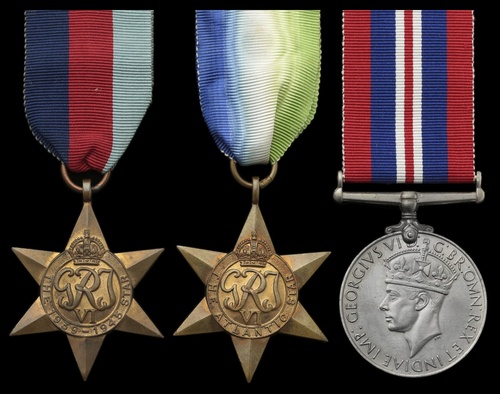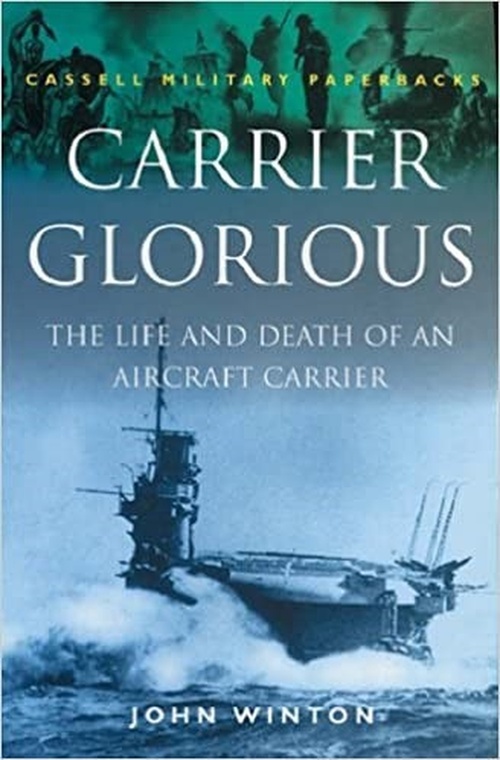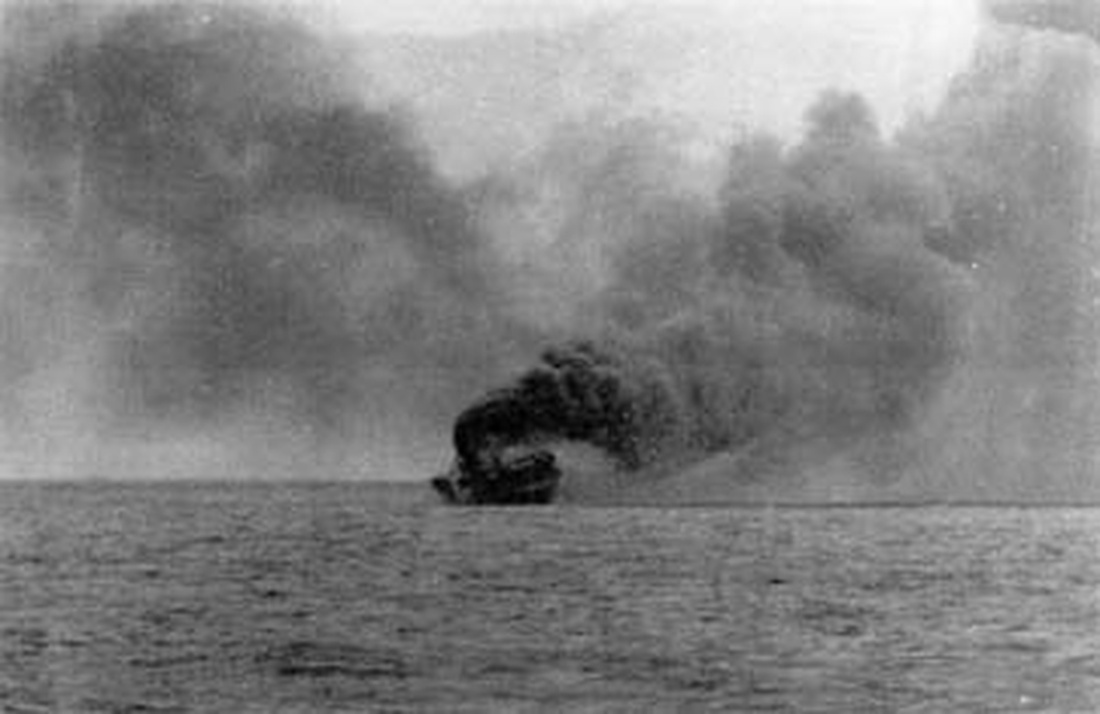Auction: 22003 - Orders, Decorations and Medals
Lot: 389
8 JUNE 1940: LOSS OF THE "GLORIOUS" AND HER ESCORTS
'At 1545 [on 8 June 1940] they [H.M.S. Glorious and her escorts] were spotted by the German battleships Scharnhorst and Gneisenau. With no aircraft in the air to provide an early warning, and despite a heroic, Victoria Cross-nominated defensive performance by the destroyers, escape proved impossible. By around 18:20, the valiant Acasta, last of the British ships still afloat, which had torpedoed Scharnhorst in a last gasp attack, sank, blazing, beneath the waves. Aboard Scharnhorst a film crew recorded the action and Glorious became perhaps the first major Royal Navy ship whose demise was seen in moving pictures, triumphantly displayed to the world only days later on the newsreel 'Die Deutsche Wochenschau'.
Some 900 men went into the cold, northern waters that evening and they faced a horrifying ordeal. Despite saluting their gallant foes, the German battleships did not stop to pick up survivors. The British, on the other hand, unaware that the three ships had been lost until the following day, even continued to radio orders to them until the Germans announced the sinkings. Hour after hour men waited in the water and in open rafts as their shipmates slipped away around them. When Norwegian vessels finally found them nearly three days later, only 40 remained alive. The death toll of 1,519 exceeded any of the other great British naval disasters of the war … '
An article by the naval historian Philip Weir, refers; see History Today, 8 June 2015.
A poignant Second World War campaign group of three awarded to Stoker 1st Class A. Cohen, Royal Navy, among those lost when the aircraft carrier Glorious was sunk by the Scharnhorst and Gneisenau off Norway in June 1940
In that unequal and tragic contest, Glorious was reduced to a 'blazing pyre', sinking with an eventual loss of 1207 officers and ratings, most of them succumbing to exposure after abandoning ship
Those casualties, when combined with the heavy loss of life suffered by the crews of her gallant escorts - Acasta and Ardent - amounted to one of the worst disasters in the annals of the Royal Navy, a disaster that continues to attract controversy to this day
For German footage of the final moments of the Glorious and her consorts, see:
https://www.hmsglorious.com/name-this-page-ben/2019/3/10/churchill-operation-paul-and-the-sinking-of-hms-glorious-ardent-amp-acasta
1939-45 Star; Atlantic Star; War Medal 1939-45, with original Admiralty condolence slip in the name of 'Albert Cohen', and O.H.M.S. forwarding box addressed to 'Mrs. F. Hodgson, c/o Medical Superintendent, Stanley Road Hospital, Aberford Road, Wakefield, Yorks', good very fine or better (3)
Albert Cohen was the son of William Cohen, a railway porter, and his wife Fanny (nee Liversedge). The couple were married at St. Andrews Church, Leeds on 17 January 1914 and Albert was born a year or two later, about the time of his father's untimely death in 1916.
His widowed mother subsequently married George Hodgson, again in Leeds, in 1922, but was living at Wakefield at the time she received her late son's awards direct from the Admiralty.
Loss of the "Glorious"
During the Norwegian campaign the aircraft carrier H.M.S. Glorious operated alongside her more modern consort, Ark Royal, providing air cover to Fleet units and the Army Expeditionary Force fighting the German invasion ashore. Owing largely to the superiority of the Luftwaffe air power and the rapid territorial advances made by the Germans, the British Government decided to evacuate their forces from Norway, at the same time as they were forced to do so in France. This was achieved successfully through the efforts of the Royal Navy, including the landing on Glorious of two squadrons of R.A.F. fighters from airfields ashore.
It was during the allied withdrawal that Glorious detached herself from the main naval force, in order to undertake an independent passage back to Scapa Flow, albeit with a destroyer escort in the form of Acasta and Ardent. Here, then, a decision that attracts controversy to this day, in addition to events played out on the carrier itself.
The remainder of the story is one imbued with high courage and tragedy, Glorious and her escorts being intercepted by the German battlecruisers Scharnhorst and Gneisenau, who had put to sea in anticipation of a British withdrawal. In the memorable words of the German lookout who first sighted the Glorious, "I had never seen an aircraft carrier before this moment - then we sank her!"
Unable to escape or fly off any aircraft, Glorious was doomed, and by superb German gunnery she was hit - rapidly and repeatedly - and set on fire, while her escorting destroyers Ardent and Acasta desperately tried to shield her with smoke screens and suicidal torpedo attacks. Both were sunk with guns still blazing defiantly to the last, and one torpedo fired by Acasta struck the Scharnhorst aft, causing serious damage. Subsequently, the German ships gave Glorious the coup de grâce, but did not pick up any survivors, and withdrew from the area.
Cohen, who was 23-years-old at the time of his death, has no known grave and is commemorated on the Plymouth Memorial; Commonwealth War Graves Commission records state that his official number was D/KX 90411.
Recommended reading:
Also see 'The Sinking of H.M.S. Glorious: An Avoidable Tragedy?'
https://www.youtube.com/watch?v=9QvkTdcsXpY
And the Glorious, Acasta and Ardent Association website:
http://www.glarac.co.uk/node/16
Subject to 20% VAT on Buyer’s Premium. For more information please view Terms and Conditions for Buyers.
Sold for
£150
Starting price
£130









